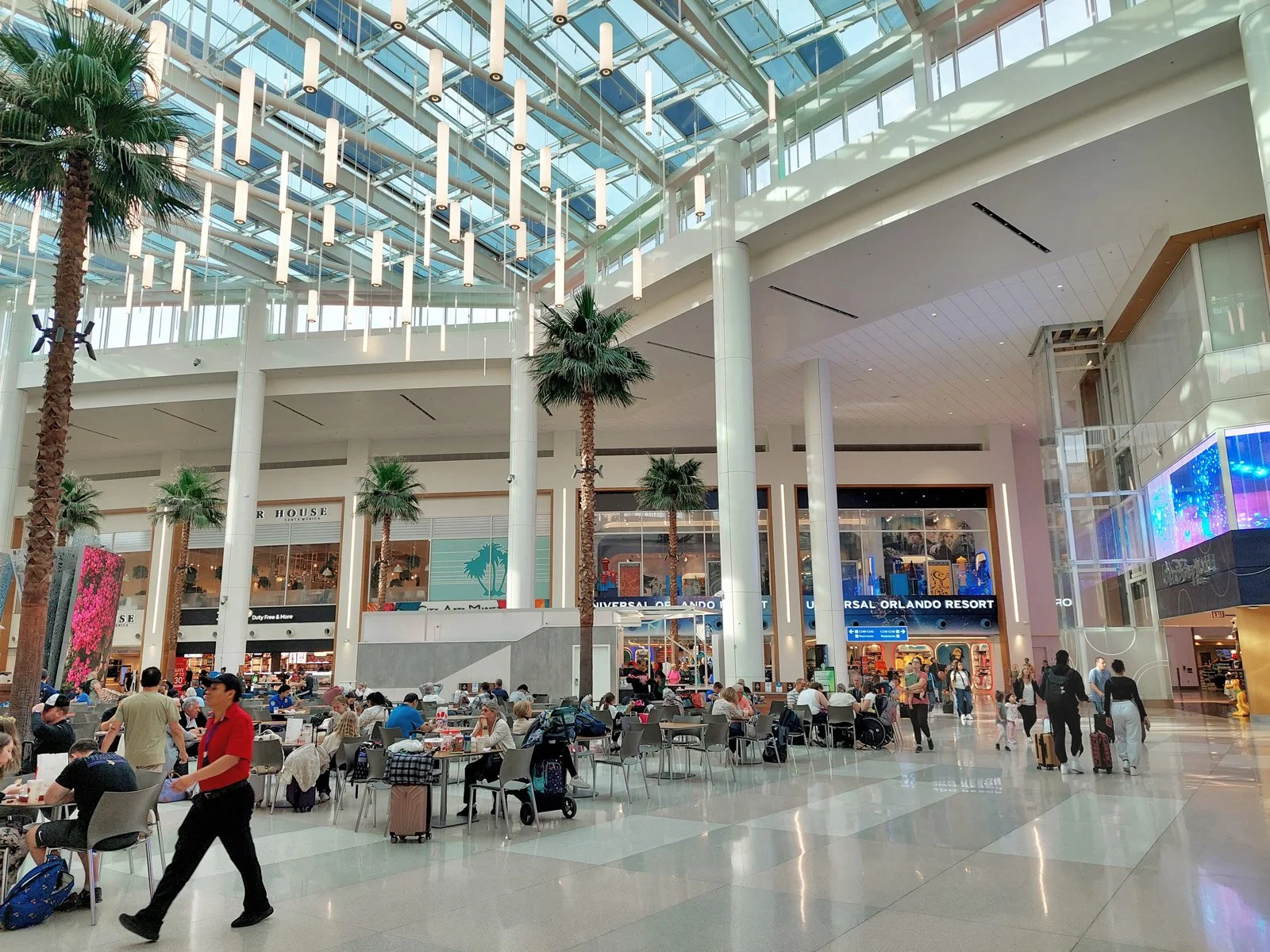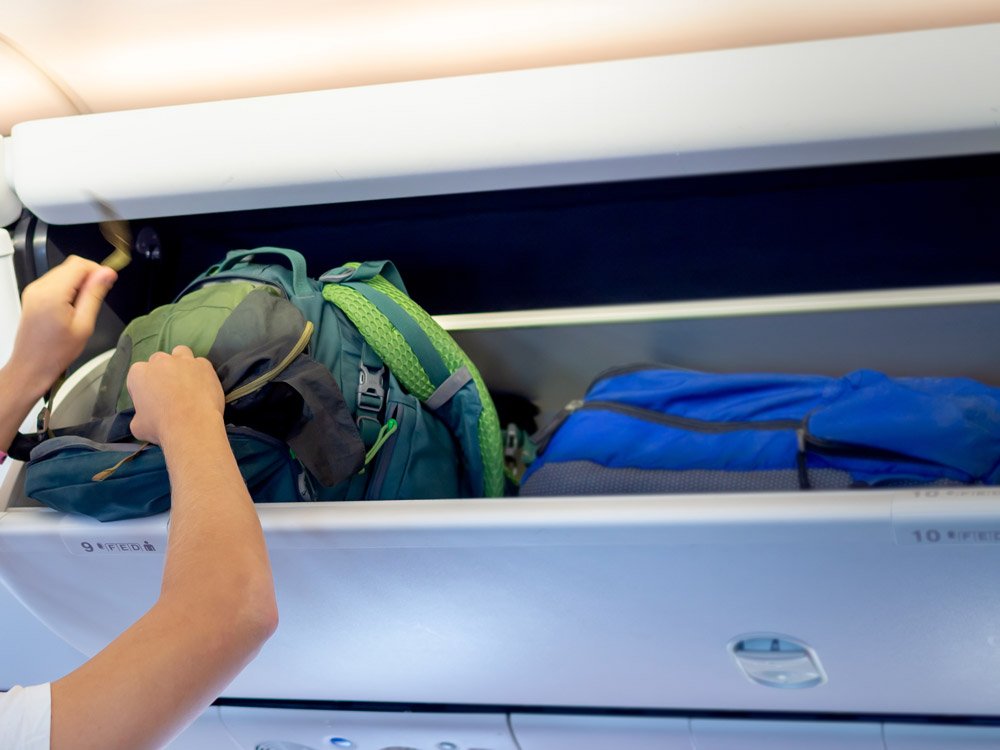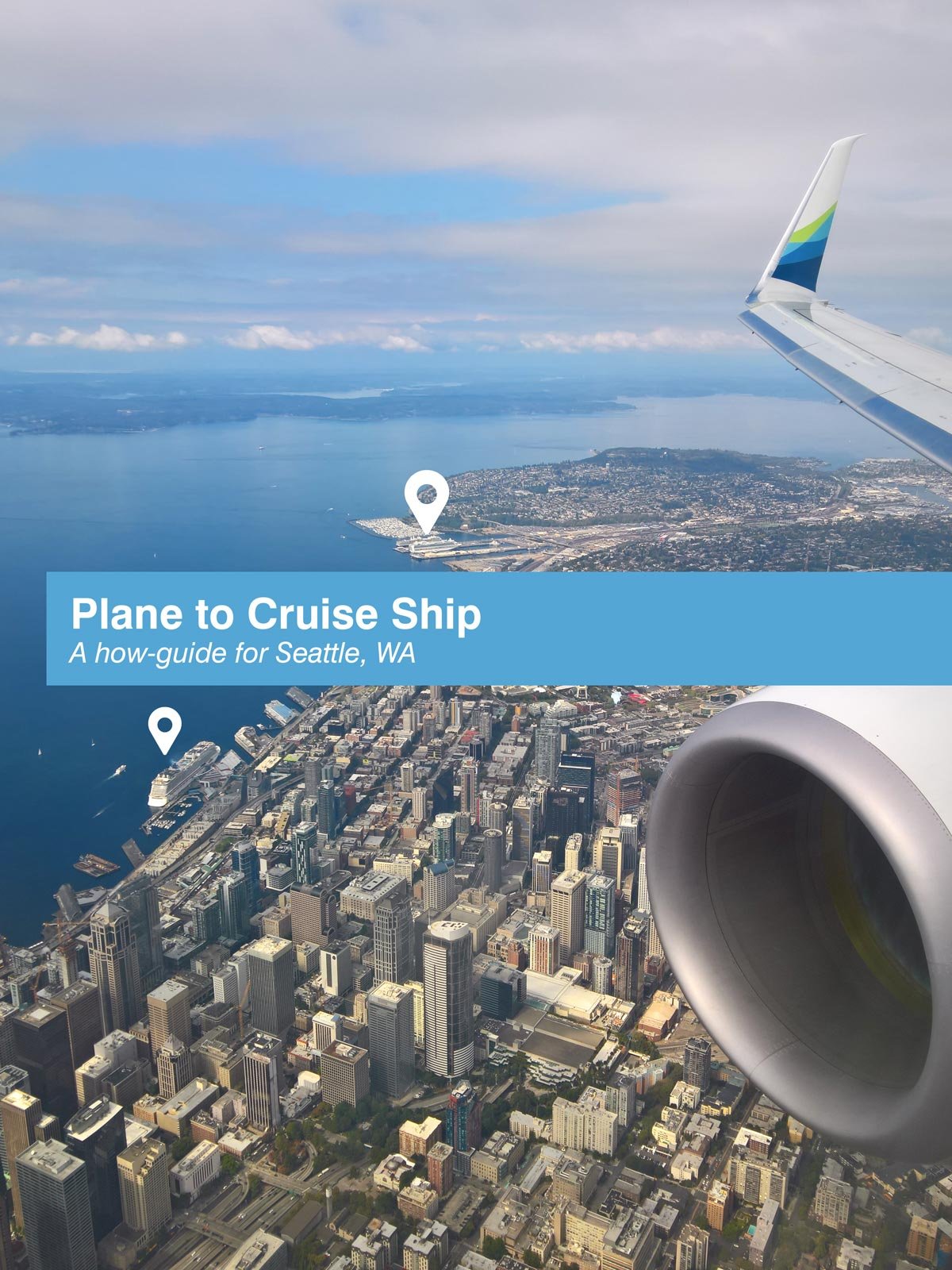How-to Guide of the Best Window Views | Downtown Seattle Up-Close
The Downtown Seattle skyline is a stunning sight on final approach to Seattle-Tacoma International Airport.
Image: The Window Flyer
Seattle, Washington, the Emerald City, with its towering downtown skyscrapers that go by just before landing. It’s an up-close and personal view that never gets old, even for those who regularly fly into Seattle-Tacoma International Airport (SEA). The view is so iconic because it happens to be created by the right combination of a photogenic skyline, a waterfront, and a landing approach path that takes planes right over the downtown area.
If you’re from Seattle or Washington State and a frequent flyer, you’re probably already well aware of how to get the best view. But if you’re visiting Seattle for the first time or maybe you’re from Seattle and only fly occasionally, let The Window Flyer help you out. This guide will give you tips on how to get the best possible view, like the one at the top of this article, and experience this sight that is loved by so many.
First and foremost, we should mention that views are never guaranteed – there are many variables, a number of which are out of a passenger’s control, such as the weather, air traffic control, etc. which can make or break the possibility of seeing certain sights. However, the how-to guide below outlines necessary steps to give yourself the best opportunity for a good view (and souvenir photo!) should all the other variables fall into place.
ADVERTISEMENTSteps to get the best view of Downtown Seattle
1) Pick a Window Seat
First, pick a window seat. This probably goes without saying, but it is pretty much a necessity for being able to see Downtown Seattle. In many other places, the sought-after sights are positioned far enough away in the distance, closer to the horizon, (Mt. Hood, Oregon, anyone?) so that one doesn’t necessarily need to be sitting in the window seat to experience them. Not true for Seattle though – because the landing flight path runs so close to downtown, the entirety of the city will be positioned far below the horizon and visible only from the window seat.
2) Sit on the right side of the plane, away form the wing
Next, your window seat should be on the right-hand side of the plane. Because of where the predominant final approach path into Seattle-Tacoma International Airport is located, Downtown will almost always be located on the right side of the plane. There are a couple rare instances where a close-up view of Downtown might be on the left side, but we will explain that later. Additionally, your seat should also be in the front-third or rear-third of the plane so that the engine and wing do not get in the way. As Downtown will be located far below the horizon, underneath the wing, you do not want to have it obscure your view. A seating position farther from the wing also gives you a better opportunity to creatively frame the wing into a potential photo.
The Downtown Seattle skyline will be located on the right-hand side of the plane during final approach.
Image: The Window Flyer
3) Book a Morning Flight
Lastly, book a flight that arrives in Seattle around mid-morning (ideally by 10am). This will ensure that the sun is high enough in the sky to provide good lighting, but more importantly, it also ensures that the sun is positioned behind the plane, illuminating the foreground scene in front of you. We also emphasize mid-morning because of the way the streets and buildings of Downtown Seattle are oriented. The streets run northwest-to-southeast, meaning that the sides of the buildings that you want to see illuminated are facing toward northeast. After mid-morning (depending on the time of year), the sun will have already moved too far to the south and these northeast-oriented building faces will be in shadow.
There are a couple caveats to this time-of-arrival recommendation though. For one, when it is partly cloudy, the daylight levels around the buildings will be a little bit more even, buying some additional time. Furthermore, late-morning arrivals can still offer good views, but will create more contrast between light and dark on the buildings. Depending on your personal tastes for potentially photographing the scene, this might actually be preferred. In late-morning, the sun is still positioned behind the plane, so the scene will still be partially front-lit.
Mid-morning is the best time of the day to arrive in Seattle for the perfect Downtown view. Because the sun is behind the aircraft, the scene will be front-lit and without glare, resulting in great lighting and blue waters. The image on the left was taken about 11:30am on an April morning, which is a little bit too late as the buildings are already in shadow, but it does provide a nice contrast quality to the photo. The image on the right was taken on a slightly overcast summer day, which helps even out the lighting a bit.
Image: The Window Flyer
4) AFternoon FLights = bad views, unless your plane takes the western downwind leg (most flights from Oregon & California)
In most circumstances you do not want to fly into Seattle on a sunny afternoon/early evening and expect to get a good view. The sun’s position to the west creates backlighting and glare off the water, making the skyline appear very dark to both the naked eye and your camera. The intensity of the sun will also cause you to see reflections of yourself in the window, and will also diffract through any dirt on the airplane windows, similar to driving into the sun with a dirty windshield. Arriving in the afternoon or early evening simply will not give you a clear, close-up view of Downtown.
However, if you happen to be flying in the afternoon from cities to the south (i.e. Oregon and California), there is one opportunity for a better view. Flights from these destinations will most likely take the western downwind leg, which flies over Elliott Bay before merging with other planes in the final approach leg. This downwind leg can provide an astonishing front-lit view from the other side of Downtown, though it will be farther away, and not up-close. But after you turn into the final approach leg, the up-close view will be the same as any other afternoon arrival (not good).
An afternoon arrival will not give you a clear view due to the position of the sun - buildings will be in shadow, Elliott Bay will be dark and glare-filled, and reflections of your body will appear in the window (in this instance your hand, from taking a photo).
Image: The Window Flyer
Flights from origins to the south (Oregon, California, etc.) can provide a good afternoon view from the other side of downtown, due to taking the western downwind leg approach, but the buildings will be farther in the distance.
Image: The Window Flyer
Factors beyond your control
So let’s say you’ve done all of the above, get on the plane, are super excited to see Downtown up close, and before you know it, you land without ever seeing it. How can that be? Well, there are a number of variables beyond anyone’s control that could preclude a sighting of the Downtown Seattle skyline.
1) Seattle can be cloudy at times
First and foremost, the weather. As you are probably well aware, it can get cloudy in Seattle. These clouds can often hover so low that you’re still flying above them when the plane passes over Downtown, completely obscuring it from view. Mid-April thru mid-September are the sunniest months in Seattle, and give you the best chance for a clear view, but there can still be cloudy days in the middle of summer.
Sometimes you’ve done everything right and it’s just cloudy. Downtown is beneath the blue arrow.
Image: The Window Flyer
2) Wind affects the direction you land from
Secondly, the prevailing wind direction dictates the final approach path that flights take. Most of the time, the winds in Seattle blow from the south, meaning that planes land from north to south. This is north-to-south landing scenario is where you will see Downtown. However, when the winds switch direction (which ironically tends to happen more in the summer during the sunniest months that provide the best chance for a good view), the air traffic flow reverses and planes land by flying south-to-north. When this occurs, the approach paths do not pass over Downtown, which unfortunately means you won’t have the chance to see it.
Sometimes the wind direction changes, and flights land flying south-to-north. In this situation, all bets are off - the final approach path does not go anywhere near downtown.
Image: The Window Flyer
3) Air Traffic Control dictates where your plane goes
The third variable is air traffic control. In the more common north-to-south landing pattern, when traffic volumes are normal or heavier, planes will turn into their final approach path farther north, meaning the flight path will eventually go over Downtown. However, if traffic volumes are lighter, flights may enter into their final approach earlier. This may have impact depending on which side of Downtown your plane enters the final approach path from. If your plane takes the eastern approach (which flights arriving from cities located east or southeast of Seattle, such as Spokane, Minneapolis, and Salt Lake City, generally do), it might not be a big deal. Downtown will still be on the right-hand side of the plane, but you might not get as close to downtown as you would on a normal day, and you may also need to look lower down the window as your plane will most likely be in the middle of banking to the left as you pass by downtown. Conversely, if your plane takes the western approach (which flights arriving from cities located to the south of Seattle, such as Portland and San Francisco, generally take) in a time of light-traffic, then Downtown could potentially end up on the left-hand side of the plane.
Diagram of three-years worth of approach paths that The Window Flyer has taken into SEA. Most of the time, flights enter the final approach path (black) north of downtown, but occasionally, some flights along the western downwind leg (blue) can bank over downtown, causing the view to be on the left side of the plane, rather than the right side.
Image: The Window Flyer
ADVERTISEMENTSUMMARY
In closing, there are a number of steps you can, and need to, take in order to set yourself up for the opportunity to nab the perfect up-close sighting of Downtown Seattle. Book a window seat on the right-hand side of the aircraft, and make sure it is located in the front-third or rear-third of the aircraft to avoid the wings. Next, aim to arrive mid-morning, or late-morning at the latest, for ideal lighting conditions. An afternoon or early evening arrival still provide a view of Downtown, but the sun angles and glare off Elliott Bay will make the viewing conditions very poor. If you do these three things, and also have the winning combination of clear skies, winds blowing from the south, and typical air traffic volumes, it will be your lucky day to experience Downtown Seattle up-close and personal in all its beauty. We hope you find this guide helpful for your next (or maybe your first) trip to Seattle, and feel free to share any photos you might have taken of this view!
Do you have any other favorite views? Leave them below in the comments section, we’d love to hear from you.
Related Content
















